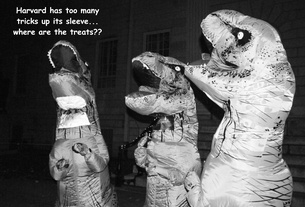{shortcode-68f5f5a2809d5b76c083eeb10b19320d9c7c93db}
During his tenure in the early 19th century, University President John T. Kirkland emphasized the independence of each Harvard school, famously saying, “it is our rule here for every tub to stand on its own bottom.” Yet the University’s current capital campaign, which will complete the first year of its public phase this fall, highlights an ongoing shift away from this 200-year-old philosophy as it applies to accruing resources and setting goals for Harvard’s various schools.
Today, the mission of “One Harvard” permeates campaign messaging, washing over centuries of difference. From promotional materials delivered to mailboxes around the world to pitches made to billionaires over cocktails, the notion of University cohesion through inter-school collaboration has dominated official campaign messaging and planning.
Though differences in cultures across schools persist and with them, the redundancies and particularities of a large, decentralized body, the $6.5 billion campaign considered to be Harvard’s first truly University-wide giving push has brought it closer than ever to acting as one University. And as campaign officials have mobilized to unify fundraising efforts and donors have contributed to multiple schools and cross-school initiatives, they have sown the seeds of physical structures and research ventures that have the potential to tie together long-independent pieces of the University for decades to come.
CROSSING OVER
Stemming from the ambitions of modern University leaders and the demands of a changing global landscape, the desire for increased University cohesion has gained traction across the Harvard community, manifested in the increased promotion and donor support of initiatives that cross school boundaries.
University President Drew G. Faust’s focus on the One Harvard mission, which she has championed since assuming the presidency in 2007, represents a culmination of a vision two decades in the making.
While leading Harvard’s last capital campaign in 1990s, then-University President Neil L. Rudenstine established a $40 million goal for a set of unprecedented inter-school endeavors, including the Mind, Brain, and Behavior research program. The initiatives ultimately failed to attract the donor support Rudenstine had hoped for, though, with the goal still unmet just six months before the end of the $2 billion fundraising effort.
Rudenstine’s successor, Lawrence H. Summers, was somewhat more successful after he moved to Massachusetts Hall in 2001. He galvanized support for cross-disciplinary efforts such as the Stem Cell Institute and pushed for centralization of donor databases across schools, resisting “bureaucratic Darwinism,” a term coined by Faculty of Arts and Sciences Dean William C. Kirby to describe inter-school competition for donors.
Summers’s appointee for the position of vice president of alumni affairs and development, Business School chief financial officer Donella M. Rapier, identified increased collaboration as a priority as Harvard prepared for its first truly-University wide campaign. “The plan is...not to say, ‘You get a smaller slice, we get a bigger slice.’ The whole pie expands,” she said in 2003.
When the financial crisis stymied ambitions for the Summers campaign, Faust—a vocal advocate of the One Harvard mission—moved to carry on the dreams of a more unified institution.
Faust replaced Rapier with Tamara E. Rogers ’74, the then-fundraising dean at the Radcliffe Institute for Advanced Study, where Faust herself had been dean before her presidency. Within months of her appointment, Rogers assembled a team devoted to fundraising for cross-school programs, and in an interview last spring, she said that her office has focused on increasing coordination to avoid duplication in donor outreach efforts. A web-based application launched by HUIT last fall allows Harvard’s 300 “frontline gift officers” to share notes and contact information for donors and minimize redundant communications.
The creation of University-wide priorities such as the Smith Campus Center, campus sustainability, and virtual education also illustrates increased collaboration. Rogers attributes the rise in multi-school efforts to Rudenstine’s campaign, which helped promote ideals of cohesion and collaboration.


